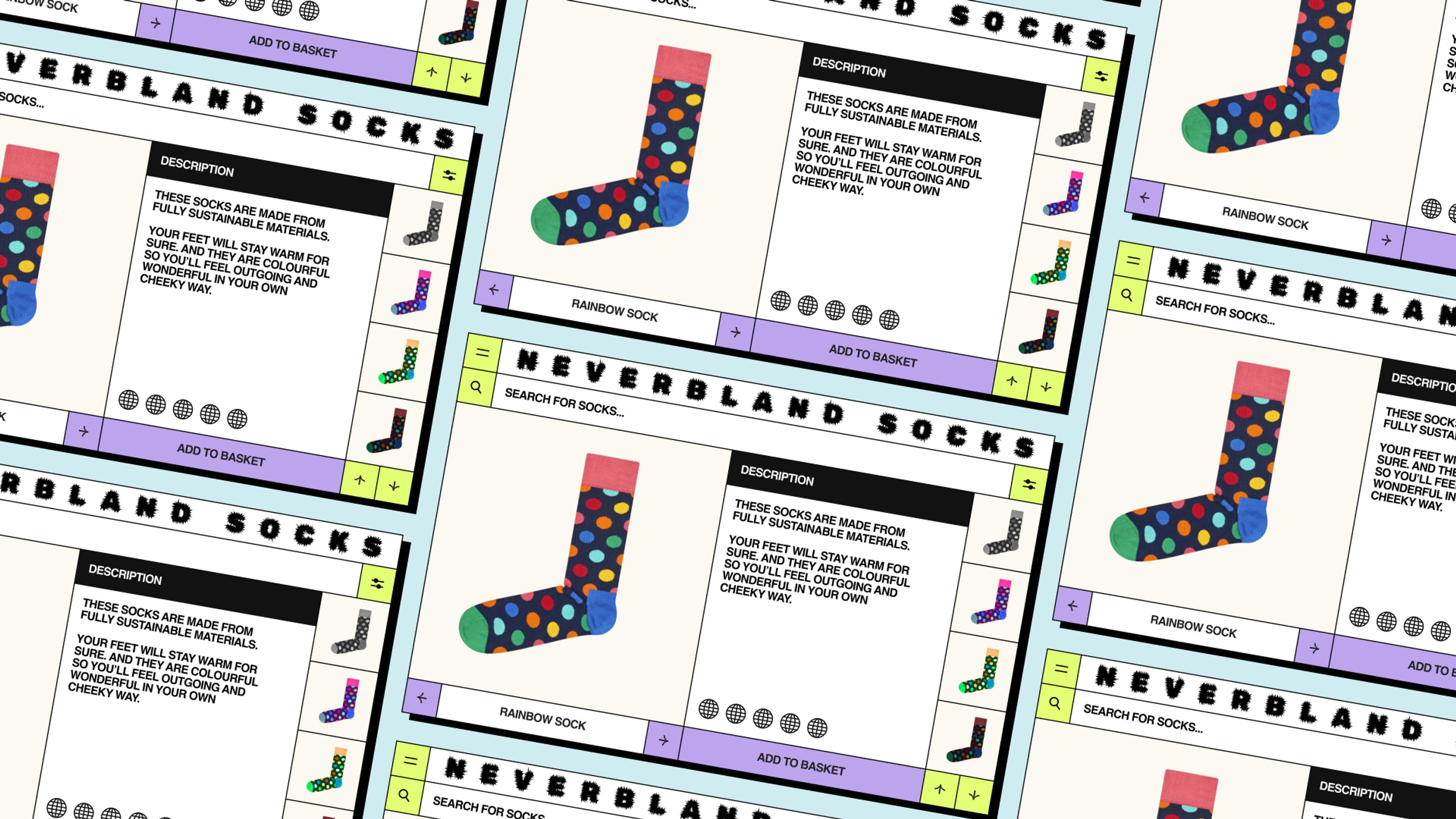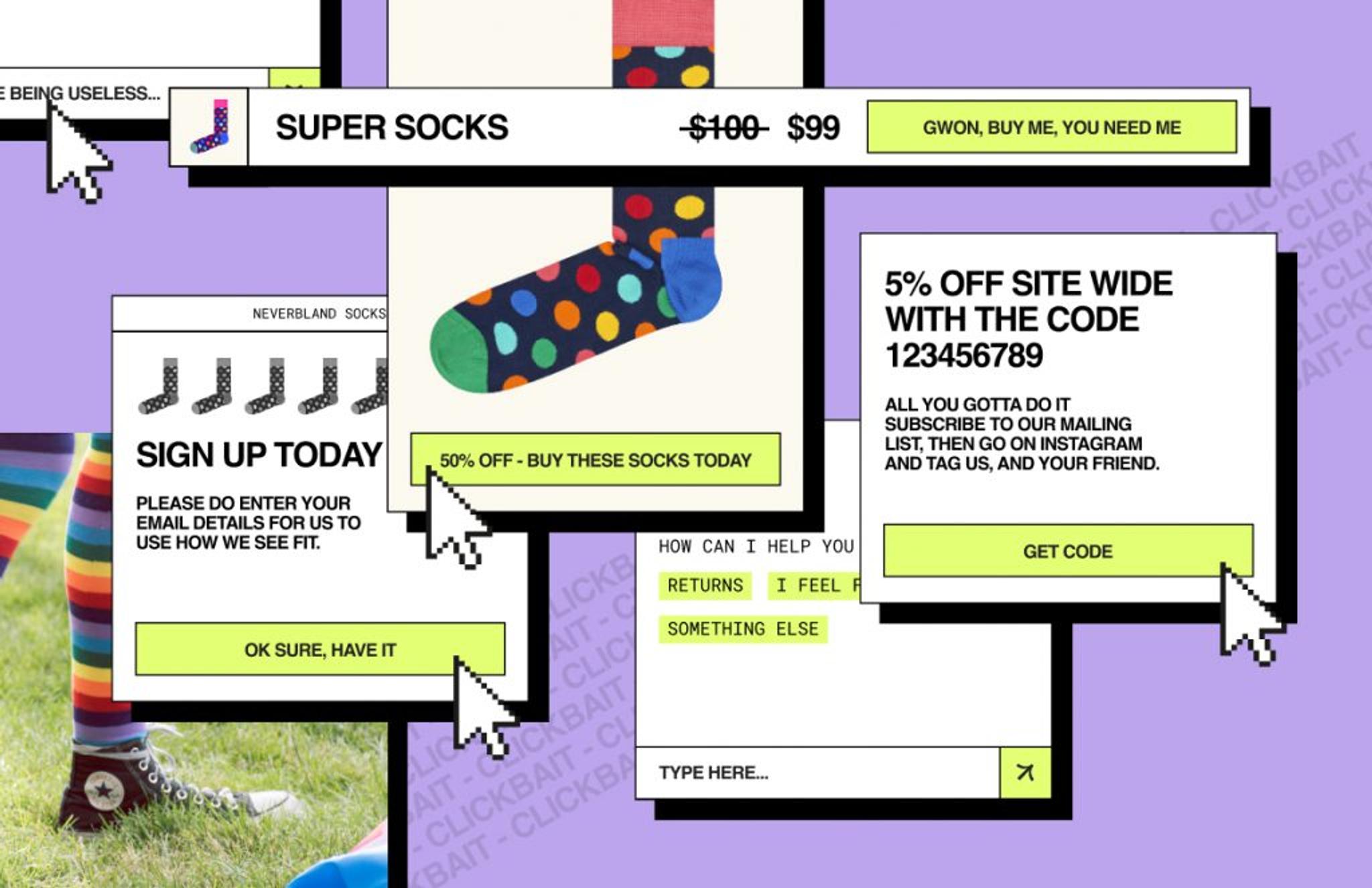What is UX? Start by understanding what could happen without it

Bethan McGrath
15.11.2022

A quick google search for ‘what is UX design?’ will return just under fifty million results. If you’re stuck in the swirling sea of buzzwords (design thinking, user-centric design, UX, CX, XD), don’t stress. You’re not stupid. The truth is that user experience design is a relatively young discipline that’s changing all the time, and we’re all still trying to work out how to best describe it.
A sock-related analogy
To understand what UX is, it’s useful to understand what happens without it. Let’s say you want to sell socks online, and you need a website. If you hired a freelance developer to build it, you’d have a website, but it would probably be pretty ugly. So you could bring in a graphic designer to help. Then you might have a beautiful website, but it still might not generate the business results you were hoping for.
That’s because every decision you made about how that website should work was based on your business priorities and assumptions about your customers. This is a risky way of building a website.
Let’s say you have a style of socks with a very high profit margin. You might think “I’ll put these socks at the top of the homepage, and add a popup on every page to get them in front of customers. They’re great socks, and these design choices will definitely increase sales”.
Sales might go up in the short term, but by pushing a product onto users and interrupting the journey they were trying to take, it’s more likely you’ve annoyed potential customers and made them feel manipulated into buying your most expensive product over choosing for themselves. It only takes a moment of frustration for a would-be customer to leave your site and go to a competitor who provides a better experience.

Keep users coming back
Over time, businesses have realised that making design choices based on customer needs results in the best long-term business outcomes. Put simply, when people have a nice time using your website, they’re more likely to come back.
Founders or decision-makers often lack the distance needed to understand how a normal person interacts with their websites and digital products. Their assumptions about what people want are often wrong, incomplete, or not really considered (and that’s not a criticism – they’re juggling a hundred other plates). This is where UX designers come in.
Final thoughts
Now, this is a real simplification of the role of UX, but it captures the essence of the discipline: UX is responsible for discovering user needs, and designing with them in mind.
The goal is to make sure the user has a good experience whenever they come into contact with a digital product or service. That starts with asking the biggest questions (why should someone use this website over another?), all the way down to the smallest details (let’s remember the user’s payment details, so they don’t have to dig their card out again).
Related articles

Reaching your Peak Potential
4 min read


